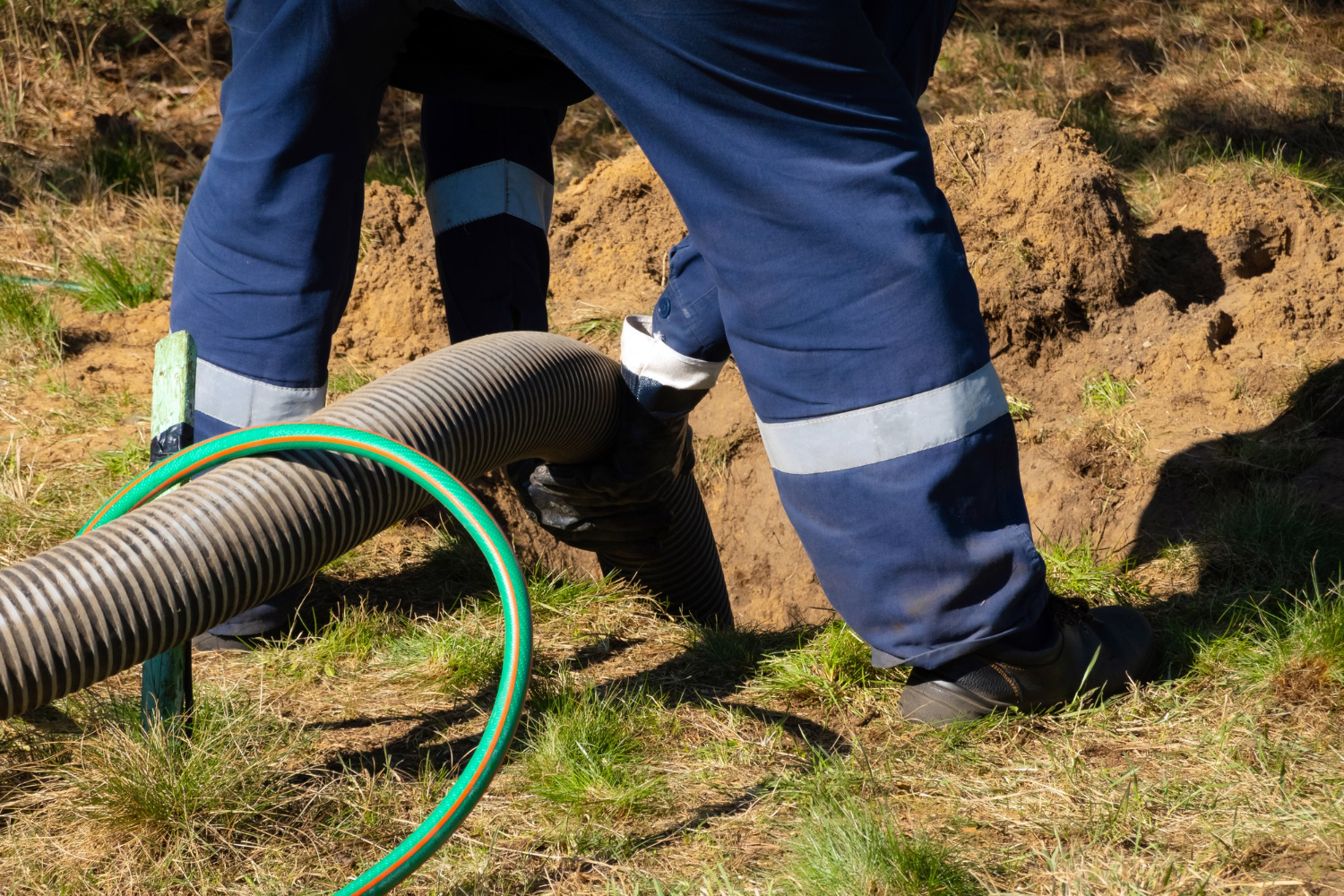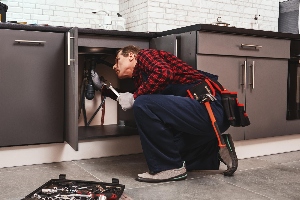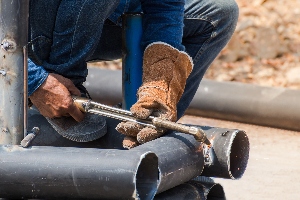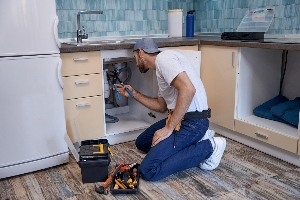Sewer line problems are among the most common yet troublesome plumbing issues homeowners face.
According to the EPA, over 75,000 sanitary sewer overflows happen each year in the U.S., many because people don't catch problems early enough. These issues can start small but quickly lead to extensive damage, health risks, and repairs that drain your wallet.
Recognizing the warning signs of sewer line problems early can save you thousands of dollars in emergency repairs and prevent damage to your home's foundation. We've seen countless cases where homeowners could have avoided major headaches by simply knowing what to look for and taking quick action when the first signs appeared.
In this guide, we'll walk you through the top indicators of sewer line trouble and explain exactly what steps to take when you spot them. From mysterious odors and slow drains to unexplained wet spots in your yard, these clues shouldn't be ignored.
Let’s break down the key points you should consider:
- Common signs of a sewer line problem in your home
- What causes sewer line damage or blockage?
- What to do if you suspect a sewer line issue
- Sewer line repair & replacement in Columbia and Greenville, SC
Keep reading to learn how to identify these warning signs now, which will help protect your home and your budget from serious plumbing disasters.
Common signs of a sewer line problem in your home
Sewer line problems often show warning signs before turning into major issues. Catching these early can save you from expensive repairs and property damage.
The U.S. sanitary sewer network is valued at over $1 trillion, according to the EPA. Preventive rehabilitation and regular maintenance are essential to preserving infrastructure and avoiding chronic failures and costly overflows.
Slow drains and frequent clogs in multiple fixtures
Slow drains in just one fixture usually point to a localized clog. But when multiple drains throughout your home start backing up, this suggests a deeper problem in your main sewer line.
You might notice your toilet, shower, and sink all draining slowly at the same time. This happens because blockages in the main line prevent water from flowing properly through your entire system.
Try paying attention to patterns. If flushing your toilet causes water to back up in your shower or sink, this is a clear indication of a sewer line issue.
Common causes include buildup of grease, hair, and other debris that accumulate over time. Tree roots can also infiltrate your pipes through small cracks, creating blockages as they grow.
Gurgling sounds or foul smells coming from pipes
Unusual noises from your drains often signal sewer line problems. Listen for gurgling sounds when you flush toilets or run water in sinks. These sounds happen when air is trapped in your pipes due to blockages.
Foul odors are another telltale sign. Sewer gas has a distinct, unpleasant smell similar to rotten eggs. If you notice this smell coming from multiple drains, your sewer line likely has a breach or blockage.
These smells occur because sewer gases that should be vented outside are escaping into your home. Besides being unpleasant, these gases can be harmful to your health.
Don't try to solve the problem with air fresheners. They only mask the smell without addressing the underlying issue.
Sewage backup in tubs, toilets, or floor drains
Sewage backup is one of the most serious and obvious signs of sewer line problems. This happens when waste can't flow away from your house properly and instead returns through the lowest drains in your home.
Basements, ground floor bathrooms, and utility sinks are often the first places where backup appears. You might see dark water rising from floor drains or toilets, sometimes containing solid waste.
This situation requires immediate attention as it poses health risks. Raw sewage contains bacteria and pathogens that can cause illness.
If you experience backup, don't use any water fixtures until the problem is resolved. Additional water usage will only make the situation worse.
Soggy patches or sinkholes forming in the yard
Your yard can reveal hidden sewer line problems. Look for unusually lush, green patches of grass over your sewer line. These areas appear greener because sewage acts as fertilizer.
Soggy areas in your yard, even during dry weather, often indicate underground leaks. The excess moisture from leaking sewage creates wet spots on your lawn.
In serious cases, you might notice depressions or small sinkholes forming. These develop when soil is washed away by the continuous flow of leaking water.
A distinct sewage smell in your yard is another red flag that shouldn't be ignored. Fresh air should quickly disperse normal outdoor odors, so persistent foul smells suggest underground leakage.
What causes sewer line damage or blockage?
Sewer line damage happens for many reasons, often developing slowly before causing major problems. Understanding these common causes can help you spot issues early and take action before they become expensive emergencies.
Tree root intrusion and pipe collapse
Tree roots naturally seek water sources, making your sewer lines a prime target. They can find even tiny cracks in pipes and grow into them. Once inside, roots expand and create blockages or completely break pipes.
Mature trees within 10 feet of your sewer line pose the highest risk. Symptoms of root intrusion include gurgling toilets, slow drains, and sewage backups.
Pipe collapse often follows root intrusion if left untreated. When pipes collapse, they create sinkholes in your yard or driveway. This requires immediate, extensive repair work.
To prevent root problems, consider installing root barriers around existing pipes. Regular inspection with camera technology can catch root issues before they cause collapse.
Grease, debris, and non-flushables buildup
Cooking grease poured down drains solidifies in pipes, creating stubborn blockages over time. It acts like glue, catching other materials flowing through your pipes.
Common non-flushable items causing problems include:
- Wet wipes (even "flushable" ones)
- Paper towels
- Feminine hygiene products
- Cotton balls and Q-tips
- Dental floss
These items don't break down like toilet paper and create clogs. Food scraps, coffee grounds, and hair also contribute to blockages when they build up.
We recommend using drain strainers in sinks and showers to catch debris. Never pour grease down drains—collect it in containers and dispose of it in trash. Educate everyone in your household about what truly belongs in toilets: just waste and toilet paper.
Aging pipes and shifting soil
Older homes often have pipes made from materials with limited lifespans. Clay pipes (common before 1980) typically last 50-60 years before cracking. Cast iron pipes may last 75-100 years but eventually succumb to corrosion.
Soil movement puts significant pressure on buried pipes. This happens due to:
- Seasonal ground freezing and thawing
- Soil erosion under foundations
- Construction activities nearby
- Natural settling over time
Signs of pipe damage from aging or soil shift include recurring backups, foundation cracks, and unexplained wet spots in your yard. Homes older than 40 years should have sewer line inspections every 2-3 years.
Modern pipe materials like PVC offer better durability and flexibility to withstand shifting soil conditions.
Heavy rains and sewer overloads in SC
South Carolina's climate presents unique challenges for sewer systems. Heavy rainfalls, particularly during hurricane season, can overwhelm municipal sewer systems and affect your home's drainage.
When excess water enters the system, it creates pressure that can back up into the lowest points in your home—usually basement drains or first-floor bathrooms. This is especially problematic in coastal areas with high water tables.
Sump pumps offer protection against weather-related sewer problems. Backflow prevention valves are also valuable investments that stop sewage from flowing backward into your home during system overloads.
Climate change has increased the frequency of heavy rain events in SC, making these protective measures more important than ever. We recommend having emergency plumber contacts ready during storm seasons when sewer overloads are most common.
What to do if you suspect a sewer line issue
Taking quick action when you notice signs of sewer problems can save you thousands in repairs and prevent damage to your home. Time matters when dealing with these issues.
Shut off water and avoid using drains
First, locate your home's main water shut-off valve. This valve is typically found in the basement, crawl space, or near where the main water line enters your home. Turn it clockwise to stop water flow throughout your house.
After shutting off the water, avoid using any plumbing fixtures. Don't flush toilets, run sinks, or use showers and washing machines.
Using water when you have a sewer line problem can cause wastewater to back up into your home. This creates health hazards and property damage that can be expensive to fix.
If the issue seems limited to one area, you can keep the main water on but avoid using that particular fixture or appliance.
Call a plumber with camera inspection tools
Contact a professional plumber who specializes in sewer line problems. Look for companies that advertise sewer camera inspections in their services.
Modern plumbers use specialized camera equipment to see exactly what's happening inside your pipes. These tools can identify:
- Root intrusions
- Pipe collapses
- Blockages
- Cracks or breaks
- Bellied pipes (sagging sections)
A camera inspection helps pinpoint the exact location and nature of the problem. This precision means repairs can be targeted and less invasive.
We recommend asking if the plumber can show you the video feed. Seeing the issue yourself helps you understand what's wrong and why repairs are needed.
Why DIY fixes usually make it worse
Store-bought drain cleaners contain harsh chemicals that can damage your pipes. These products might temporarily clear minor clogs but won't solve serious sewer line issues.
Mechanical snakes or augers from hardware stores lack the length and power to reach main sewer line blockages. They can also get stuck or damage pipes if used incorrectly.
DIY digging to access sewer lines is dangerous. You risk:
- Hitting other utility lines
- Causing structural damage
- Creating larger leaks
- Violating local codes
Most importantly, DIY attempts delay professional help, giving small problems time to become major emergencies. What starts as a simple clog can lead to sewage backups, foundation damage, and health hazards.
Don't wait, small clogs can cause major repairs
Sewer line problems never improve on their own. They only get worse with time and use.
Beyond structural damage, untreated sewer problems may lead to environmental contamination. A USGS investigation documented fecal coliform counts as high as 870,000 cells/100 mL in groundwater near a failed line—underscoring the urgency of fast repairs.
A small root intrusion today becomes a complete pipe blockage in months. Minor cracks allow more roots to enter and expand, eventually breaking the pipe entirely.
Partial clogs create pressure that strains pipe connections. This pressure can turn hairline cracks into major breaks or cause backups throughout your home.
The difference in cost between early and late intervention is significant. A simple cleaning might cost a few hundred dollars, while complete sewer line replacement can run $5,000-$25,000 depending on length and accessibility.
Acting quickly also helps avoid secondary damage to floors, walls, foundations, and landscaping. These "collateral damages" often cost more than the actual sewer repair.
Sewer line repair & replacement in Columbia and Greenville, SC
Residents in Columbia and Greenville, SC have access to professional sewer line repair and replacement services that can address problems from corrosion to tree root invasion. Local plumbing companies offer both traditional and modern solutions tailored to your specific situation.
How One Call Plumbing diagnoses sewer issues fast
At One Call Plumbing, we use advanced diagnostic tools to quickly identify sewer problems. Our process begins with camera inspections that allow us to see inside your pipes without invasive digging. This technology helps us locate cracks, blockages, and tree root intrusions with precision.
We also employ pressure testing to detect leaks that might not be visible with cameras alone. This comprehensive approach ensures we find the exact source of your sewer issues on the first visit.
Our technicians are trained to recognize early warning signs of sewer failure, including slow drains, foul odors, and wet spots in your yard. By catching these problems early, we can often recommend less expensive repair options rather than complete replacement.
Trenchless vs traditional repair options
Trenchless Repair:
- Pipe lining (cures in place)
- Pipe bursting
- Minimal yard disruption
- Often completed in 1-2 days
- Higher upfront cost but less property restoration expense
Traditional Repair:
- Requires digging trenches to access pipes
- Complete pipe replacement
- More disruptive to landscape
- May take 3-5 days to complete
- Lower material costs but higher restoration expenses
In Columbia and Greenville, trenchless methods have become increasingly popular due to being minimally disruptive. These techniques are especially valuable for properties with established landscaping or hardscaping features.
Traditional methods still have their place, particularly when pipes have collapsed completely or when multiple sections need replacement.
Financing and what may be covered by insurance
Most homeowner insurance policies don't automatically cover sewer line repairs, but some situations may qualify. Water damage resulting from sudden pipe bursts is often covered, while gradual deterioration typically isn't.
We recommend checking your policy for sewer line endorsements or riders that provide specific coverage. Some Columbia and Greenville homeowners have successfully filed claims for sewer backups caused by external factors.
To help manage costs, we offer several financing options:
- Interest-free payment plans for 6-12 months
- Long-term financing with competitive rates
- Seasonal discounts and promotions
- Free estimates and second opinions
Many local plumbing companies also provide warranties on both parts and labor, giving you peace of mind about your investment in sewer repair or replacement.
Conclusion
Catching sewer line problems early can save you thousands in repair costs and prevent major damage to your home. By staying alert to warning signs like slow drains, unpleasant odors, and frequent backups, you can address issues before they escalate.
Remember that professional video inspections are invaluable for confirming suspected problems. These inspections allow experts to see exactly what's happening inside your pipes without invasive digging.
Taking prompt action is essential. When you notice any potential signs of sewer line issues, don't wait - contact a licensed plumber immediately. Quick response often means simpler, less expensive solutions.
Regular maintenance is your best defense against serious sewer problems. Schedule periodic inspections, especially if your home is older or has mature trees nearby.
We recommend keeping records of any plumbing work done on your property. This information helps plumbers understand your system's history and makes troubleshooting more efficient.
By being proactive about your sewer line health, you protect not just your home but also your family's comfort and safety. The small effort of monitoring for warning signs pays off significantly in the long run.
Contact One Call Plumbing today to schedule a sewer line inspection or repair in Columbia or Greenville, SC.












